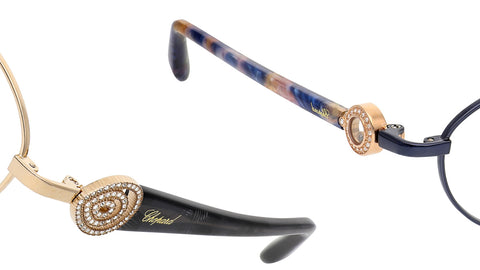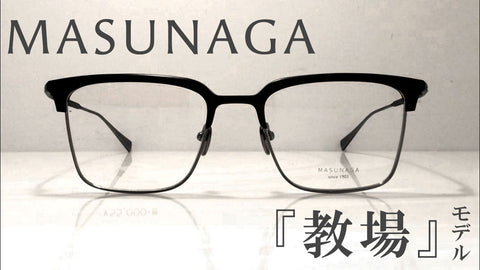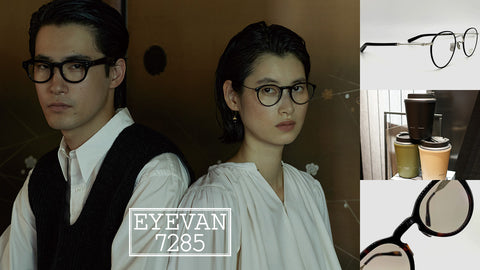
腕時計を探す
PICKUP BRANDS

hello everyone.
December is finally here, the last month of 2020.
This year, due to the epidemic of the new coronavirus, it was a year in which we had to think about a life we had never experienced before. I sincerely hope that everyone will have a healthy and peaceful New Year.
Now, I would like to talk about the last birthstone of 2020.
There are two birthstones for December: lapis lazuli and turquoise.
When it comes to jewelry stones, it is the image of enjoying wearing them with their color and transparency.
In fact, since ancient times, people have used them to connect with the gods of the sky. As someone who likes science fiction, it is a stone that gives me a special feeling of excitement as if I had the vast universe in my palm.
In addition, its vivid blue color has become synonymous with blue, such as lapis lazuli being called "ultramarine" and turquoise being called "turquoise (blue)".
Lapis lazuli has an image of the night sky from its deep blue and golden glow, and turquoise has an image of a blue sky with sunlight. How about enjoying each different vivid blue as jewelry?

Lapis lazuli is an ultramarine stone with golden spots.
It is a combination of the Latin word “lapis” meaning stone and the Arabic word “lazuli” meaning blue (or heaven or god). It is known as a raw material for pigment ultramarine.
In Japanese, it is called "Ruri", and it is counted as one of the cloisonné gold, silver, lapis lazuli, coral, amber, mantis shrimp, and agate in Buddhism, and has been highly prized in Japan since ancient times.
The ancient Roman naturalist Pliny described lapis lazuli as "a fragment of the starry sky." No other word can better describe the beauty of Lapis Lazuli.


Color display in hexadecimal for each of lapis lazuli and ultramarine blue. There is a slight difference in the amount of redness. Each one is a beautiful deep blue.
Lapis lazuli is a beautiful gem with a deep blue color and floating gold.
Variously described as indigo blue, royal blue, midnight blue, or marine blue, lapis lazuli's hue ranges from slightly greenish blue to violetish blue, and is characterized by its deep yet vivid color. .
The blue part of lapis lazuli is mainly a collection of minerals such as "lazurite", the golden part that is likened to the stars in the night sky is "pyrite", and the white spots are "calcite".

Lapis lazuli is also used as a raw material for Ultramarine, a paint loved by many famous artists. Ultramarine means "blue from the other side of the sea", and many of them have the meaning of being transported from the Middle East and Central Asia to Europe via the Mediterranean Sea. The bright blue color that contains yellow is indescribably wonderful, and it has been evaluated as a color that can only be produced by lapis lazuli. The history of lapis lazuli as a pigment material is said to be the oldest in the world. And ultramarine, which is made from gemstones, is very expensive, and it is said that many painters who were fascinated by its beauty went bankrupt financially.
Among the famous paintings, it is used in Vermeer's masterpiece "Girl with a Pearl Earring". The innocent girl's eyes and the vivid ultramarine blue that emerges from the darkness are captivating.


In the mythology of the Sumerian region that occupied southern Iraq and Kuwait around 3500 B.C. to 525 B.C., lapis lazuli was Ishtar, the goddess of love and beauty who ruled over Venus (earlier, her name was Annunna. A descendant of An, the god of the sky). It was the natural stone of the talisman worn when traveling to the Netherworld.
The combination of the goddess of beauty and lapis lazuli transcends time and region, and was handed down to Afridite (English name: Venus), the goddess of beauty who governed Venus in the Roman and Greek eras. And since Aphrodite was the goddess of love, lapis lazuli is said to have the power of love fulfillment.

In ancient Egypt, it was considered the stone of Osiris, the god of the sky and the underworld.
Lapis lazuli was considered essential for the ancient Egyptians on their journey to the underworld. When mummifying the body of the dead and preserving it, unlike other internal organs, the heart is treated specially, and the removed heart is carefully put back in its original place or preserved in a jar called a canopus along with the lungs. . At this time, a heart amulet made of lapis lazuli was placed instead of the heart that was placed in the canopus.
In ancient Egypt, it was believed that when a person died, they would be judged by Osiris, the god of the underworld. At that time, the heart and feathers of the goddess Maat were taken out and placed in a balance.
The Book of the Dead, which contains spells to regenerate in heaven, also states that the "Heart Amulet" must be made of lapis lazuli, and it is believed that lapis lazuli is imbued with magical power. That's right.

Commonly known as lapis lazuli for decoration is the golden mask of King Tutankhamun's mummy. As you can see, lapis lazuli is used abundantly. The beautiful contrast between the gold and lapis lazuli is captivating even after 3,000 years, but it was probably meant as a decoration as well as a preparation for the king's journey to the underworld.
"Guarantee of success", "Truth", "Health" and "Good Luck" are the stone words.
In addition, the power of lapis lazuli as a gemstone is said to repel evil, and it is said that it has the power to repel not only evil from the outside but also evil thoughts in your own heart. It is said that it dispels negative emotions such as anger and jealousy, and protects you from the dangers that such negative emotions create.
It corrects the wrong way of thinking in your mind and enhances your judgment, so if you wear it when you get lost in the way you should go, it will surely help the owner.


The Japanese name for turquoise is turquoise. When we think of Japanese names, we tend to imagine names written in kanji, but in the case of turquoise, the only applicable name is turquoise.
The name "turquoise" is said to be derived from the French word pierre turquoise = "stone of Turkey". However, it is not produced in "Turkey" as the name suggests.
There are various theories, but one theory is that when turquoise crossed from the Middle East to Europe, Turkey was a transit point for trade, or that Turkish peddlers were involved in sales to Europe.
In ancient Egypt, where it was produced, turquoise was called "mehkat" (joy and pleasure). Also, until the 13th century, the name turquoise was not used, and it was called by the name of "cares", which means beautiful stone.
“Turquoise blue” means a bright greenish blue. As mentioned earlier, the word “turquoise” originally meant “Turkish stone”, but it has come to mean the bright blue color of the stone.
The ideal color expression for turquoise is often described as "American robin's egg".
American robin is a thrush. Since it lays beautiful sky blue eggs, such an expression has come to be used.

Turquoise also has features not found in other stones. It is a pattern called the matrix that impurities draw on the surface of the stone. There are also types of patterns, and they are named according to their shape, such as Spider Web , Smoky Web, and Water Web .



Among the traditional colors of Japan, if you look for colors that are close to turquoise, you will find “Konparu-iro” and “Shinbashi-iro”.



Turquoise is found in only a few places on earth. It is a dry and barren area where acidic, copper-rich groundwater seeps below and reacts with phosphorus- and aluminum-bearing minerals.
Turquoise has been mined since ancient times in the Sinai Peninsula of ancient Egypt, the Middle East region such as Persia (now Iran), the southwestern part of the United States such as Arizona, and China (including Tibet), which produces many gems. It's been done.
Among the turquoises that have been mined around the world, "Sleeping Beauty" is considered to be the most beautiful and valuable.
Sleeping Beauty comes from the Sleeping Beauty Mine in Grove, Arizona, USA. The name of this mine comes from the fairy tale "Sleeping Beauty", and it seems that it was named because it looks like Sleeping Beauty when viewed from a distance.
The mine closed in 2012, so no new turquoise is produced, but the turquoise produced by Sleeping Beauty contains almost no iron, giving it a truly beautiful pure sky blue color. .



"Turquoise", which is said to be one of the gemstones that have been loved since ancient times, is found in many places in the ruins of Egypt, Mesopotamia, Indus, and the Yellow River civilization, which is called the world's four major civilizations before 5000 BC.
In ancient Egypt, it was dedicated to both Osiris and Isis along with the aforementioned lapis lazuli. Among Native Americans (Indians), it was especially sacred as a stone of God representing "the beautiful sky surrounding the earth". It is worshiped as a sacred stone that contains the power of the heavens and gods, and is said to have been used in ceremonies to listen to the voice of the gods and to pray for rain. And it was passed down from father to son for generations. It is considered one of the three major medical stones in Tibet, and among the Persians, it was said to bring good luck if you make a wish on turquoise under the new moon.
There is such a legend about the magical power of turquoise. Roman Emperor Rudolph II wore a large turquoise stone for 30 years. However, one day, when he carelessly got on his horse without holding the stone, he fell off the horse and died. Legend has it, however, that when a doctor split the emperor's turquoise in two, the emperor's eyes opened and he came back to life.
It is said that this legend was expanded and eventually became "a stone that protects the body from injury".

Rudolf II is said to have loved art. Even if you don't know Rudolph II, you may have seen this portrait of Rudolph II drawn only with vegetables.
This unusual painting depicts people with vegetables, fruits, and plants, and the Roman emperor Rudolf II, the head of the Habsburg family that ruled the world, is likened to Vertumnus, the god of fertility who governs fruit trees and fruits in Roman mythology. It's drawn. It is said to represent the reign and permanence of the emperor, who controls all the elements and seasons.
It can be said that this painting is perfect for Rudolph II, who was politically incompetent but culturally talented.

As a decoration, turquoise is also used for the mask of King Tutankhamen, which was mentioned earlier with lapis lazuli.
In Persia, it is used to decorate sacred places, such as the tiles in mosques.
Turquoise stone words are "prosperity, success, good luck, health". It is considered a stone that has a positive influence on its owner.
As mentioned earlier, among Native Americans, turquoise was also a stone that was passed down from father to son for generations, and from that tradition, it is believed that "when given by a person, it exerts even more mysterious power and protects the owner." Now available. It is a stone that I would definitely recommend as a gift for someone special.

Now, I would like to introduce jewelry using lapis lazuli and turquoise.
Pomellato is familiar from this birthstone blog. Lapis lazuli and turquoise jewelry are available in the popular nude series and Mama non Mama series.

The new 2019/2020 Deep Blue collection of Pomellato brand icon Nude uses turquoise and lapis lazuli as the base in a central London Blue Topaz setting.
The Deep Blue Collection is a popular series that expresses the shades of the Mediterranean Sea. In order to express the light and shade, we use a technique that has not been used in nudes until now, such as layering stones to deepen the color.
Since the stones are layered to deepen the color, there is a difference in the appearance of the color of the stones when viewed from directly above and from the side. Every time the nude deep blue moves with your fingertips, it shows a variety of colors and expresses the fun of nudes that has never been seen before.

Mama Non Mama is a very popular collection that uses gemstones that are colorful like candy, with its name derived from a flower fortune-telling that asks, “Do you love me or not?”
The center cabochon-cut lapis lazuli turquoise is paved with matching blue sapphires and zircons.
BOUCHERON's popular series, Serpent Boheme. Lapis lazuli turquoise also in this series.
Boucheron founder Frédéric Boucheron gave his wife Gabrielle a necklace with a motif of a snake (serpent).
He reassured her that the jewelry would protect her and bring her happiness while he was away. Since then, the snake motif Serpent Bohème has become a symbol of love and protection for Boucheron.
We highly recommend this jewelry as a gift for your loved ones.


"Mariha" is a jewelry brand that makes use of materials such as natural stones and gold under the theme of "flowers and birds". Among them, jewelry using lapis lazuli from the popular organic gem series where you can enjoy the natural feel of the stone. This organic gem series stone has a wide stone surface, so you can enjoy its mysterious charm.
"AHKAH" is maintained by women of all ages with its delicate and delicate design.
This lapis lazuli jewelry is a luxurious necklace with lace-like diamonds around AHKAH's original cut lapis.
I would definitely recommend this necklace to anyone who wants to wear a birthstone but finds lapis not enough.”

Enjoy every winter, AHKAH holiday collection is now on sale. If you are looking for a present for the holiday season, how about it?

The Pomellato Fair is finally less than a week away.
Please enjoy the "Nude" collection that expresses the natural beauty of stones.
During the fair period, we will present an original novelty to customers who have made a contract for Pomellato products.
* Since the quantity is limited, it will end as soon as it runs out.
1523-3 Tahishitamachi, Takamatsu City, Kagawa Prefecture 761-8075
TEL:087-864-5775
11:00-19:30
定休日:Wednesday (excluding holidays)
アイアイイスズ ブライダル 高松丸亀町
〒760-0029 香川県高松市丸亀町13番地1 丸亀町棟1F
TEL:087-822-5885
11:00 ~ 19:30
定休日:水曜日(祝日を除く)



![[GARMIN] 実は今が狙い目!? ガーミン epix proがオススメなワケ](http://www.eye-eye-isuzu.co.jp/cdn/shop/articles/garmin-631675060533_catch_a239b351-1089-41ed-b0e5-18a70bf6b26e_large.webp?v=1754969223)


![[GARMIN] 実は今が狙い目!? ガーミン epix proがオススメなワケ](http://www.eye-eye-isuzu.co.jp/cdn/shop/articles/garmin-631675060533_catch_a239b351-1089-41ed-b0e5-18a70bf6b26e_large.webp?v=1754969223)


















最大84回まで金利・手数料が無料の分割払いがご利用いただけます
カードをお持ちでなくても月々の分割払いをご利用頂ける、ローンタイプの決済方法です。
ウェブ上でお申し込みができる”簡単・安心・スピーディ”なショッピングローン決済です。
ご注文後、当店からショッピングローンのお申し込み手続きをしていただくリンクが記載されたメールを、お客様にお送りします。 信販会社の申し込みページにて支払い回数とお客様情報を入力後、本人確認のお電話を受けていただき完了となります。
アフターサービス
ご購入いただいた商品を末長くお使いいただけるよう、当店では正規販売店ならではの充実したアフターサービスをご提供いたします。
【腕時計】
無料点検サービス
精度測定、磁気検査、ブレスレット洗浄、作動確認
【ジュエリー】
店頭クリーニングは何度でも無料対応。
所要時間は、10~15分程度です。
リングの状態チェック
専門スタッフが店頭にて爪のゆがみや石の緩みなどリングの状態を無料でチェックいたします。
その際、最適なメンテナンスをご提案させていただきます。
【メガネ】
無料点検サービス
洗浄・くもり止め塗布、ネジ・パット交換、再フィッティング、ナイロール交換
【修理のお問い合わせ】
店舗に直接お越しいただけるお客様は、各ブランドの取扱店舗までご相談くださいませ。
オンラインショップでお買い上げのお客様はまずは、お電話かお問合せフォームよりご相談下さいませ。
厳選したブランドの取り扱い
アイアイイスズは国内外問わず生涯ご愛用いただくためにふさわしい、高品質で信頼のおけるブランドの正規取扱店です。
きちんとした正規ルートでお仕入れをし、ブランドが大切にしているこだわりや世界観を守り、その価値を正しくお客様へお伝えさせていただきます。
ラッピング無料にて承ります
プレゼントでご利用の場合は、ぜひ無料ギフトラッピングサービスをご利用くださいませ。スタッフが心をこめてお包みさせていただきます。
店頭でのご購入時にラッピングをご希望される場合には、ご遠慮なくスタッフにお申し付けくださいませ。
オンラインでご購入の場合は、ご購入時にラッピングをご指定くださいませ。
11,000円~加入できる3年間の「腕時計補償サービス」
正規販売店でのみご加入いただける腕時計補償のサービスです。
アイアイイスズでは、「GMC」と「ホディンキーウォッチケア」の2種類をご用意しました。
メーカー保証外の事故(落下、衝突、その他の偶然の破損など)は
3年間の補償期間は免責1,000円で修理可能です。
CONTACT
在庫などのお問い合わせなども
お気軽にお問い合わせください
在庫やお取り置き、些細なことでも
専門のスタッフが対応させていただきます。
お気軽にご連絡ください。
お電話でのお問い合わせ営業時間 11 : 00~19 : 30